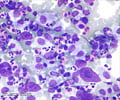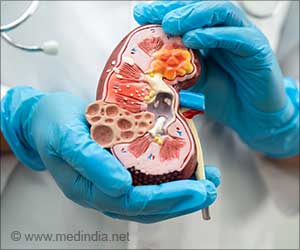Results of the phase III Inter-B-NHL-ritux 2010 clinical trial show the effectiveness of Rituximab in improving the survival rate among kids with non-Hogkin lymphoma.

‘Rituximab reduced treatment failures by 70 percent and improved three-year survival rate significantly in children with Burkitt lymphoma.’
Read More..




The addition of rituximab decreased treatment failures by 70 percent resulting in a 10 percent increase in the three-year survival rate seen with chemotherapy alone (LMB protocol).Read More..
"These outstanding results support rituximab as a new standard-of-care therapy for young patients with advanced B-cell non-Hodgkin lymphoma," Gross says.
Rituximab attaches to a protein called CD20 found on the surface of cancerous and healthy B-cells, helping the body’s immune system to recognize and attack these cells. The drug previously earned FDA approval for use in combination with chemotherapy in adult patients with B-cell non-Hodgkin lymphoma.
Though Burkitt lymphoma is the most common form of pediatric non-Hodgkin lymphoma, it is a rare disease requiring collaboration of institutions in 13 countries to identify and treat enough young patients to effectively test the benefit of adding rituximab. In all, the Inter-B-NHL ritux 2010 phase III randomized trial involved 328 patients, age 2-18 years, treated in 176 centers distributed over four continents (Europe, North America, Australia and Asia).
Gross says, "With more than 95 percent of kids alive and disease-free after three years, this looks like a cure for the vast majority of our patients, even those with the most advanced disease."
Advertisement
"The Inter-B-NHL ritux 2010 trial is a fine example of international cooperation in academic clinical research, and shows the importance of public-private collaborations with the pharmaceutical industry," Gross says.
Advertisement
Source-Eurekalert










